WHAT IS HOLOGRAPHY ?
Holography is a technique, which allows the recording and playback of true three-dimensional images. The produced image is called a hologram. The playback provides an image in light that can be viewed in different angles and is an exact copy of the original 3D object.
The inventor of holography was a Hungarian-born electrical engineer DENNIS GABOR, who won the Nobel Prize for Physics in 1971 for his invention. He developed the idea of holography in 1947, while working on improving the electron microscope. The basic idea was, that for perfect optical imaging, the total of all the information has to be used, which means, not only the amplitude of the light-wave as in usual optical imaging, but also the phase. In this manner a complete holo-spatial picture can be obtained. In 1947 coherent light sources were not available, and the conventional light sources generally provided too little light, or light that was too diffuse to obtain good results (DISPERSION of the light used). In May of 1960 THEODORE MAIMAN at Hughes research Laboratories built the first laser, pulses of red light coming from a ruby cylinder that was put inside a very bright flash lamp with a helical shape. Maiman later received also a Nobel Prize for Physics, together with Townes and Schawlow, for the development of the laser theory in 1958 (see figure 1 and figure 2).
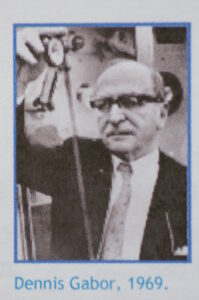
Fig. 1 Dennis Gabor |
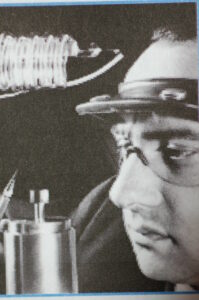
Fig. 2 Theodore Maiman |
LASER means: Light Amplification by Stimulated Emission of Radiation. This is a process for emitting electromagnetic radiation, typically light or visible light, via the process of stimulated emission. The emitted LASER light is usually a spatially COHERENT, narrow low-divergence beam, which can be manipulated with lenses (like in holography). In laser technology, COHERENT LIGHT denotes a light source that produces light waves of IDENTICAL FREQUENCY, PHASE and POLARIZATION. This also means that a laser beam has a precise mathematical property and can carry a large amount of intelligent information. When T. MAIMAN had produced the first laser, then the stage was set for the production of the first three-dimensional images and in 1960 the researchers LEITH and UPATNIEKS of the University of Michigan created the first off-axis laser transmission holograms followed around the same time by Yuri DENISYUK of the Soviet Union, who created reflection holograms that one could see using ordinary white light.
HOLOGRAMS HAVE UNIQUE CHARACTERISTICS:
1) On the same holographic (photographic) film one can record multiple scenes, images of 3D objects, on the not yet developed film. It depends on the angle under which the reference beam hits the film and creates the interference pattern with the object beam. All these different scenes can be called up, by aiming a laser beam on the photographic film, under the same angle as the reference beam that was being used.
2) When you create a cylindrical hologram, you can see the original 3D object in a 360 degree view.
3) You can copy the Master hologram with the reference beam reflecting from the Master on a new photographic film and the result will be a positive image, exactly the same as the image produced by the original Master.
4) When a light wave hits the Master holographic film, it acts as a (diffractive) filter, allowing some light to pass through and pick up the imprint in the medium. However, unlike a photographic image, it is the interaction of the new light wave with the recorded interference pattern that is seen as a 3D image. It is 3D because the new light wave becomes modified by the wave-interference pattern recorded in the emulsion and appears thereby as the original light wave emitted by the object itself.
5) When the light wave hits the Master holographic medium and reflects from this film, this will contain the information originally recorded, multiplied by the intensity of the new light beam. This will be seen by the observing eye as a VIRTUAL image reconstructed in space and as a focused REAL image appearing inside the witnessing eye or out in space just in front of it. A virtual image is the kind of image that you see when you look at yourself in the mirror, and the image appears to be behind the glass, while a real image is what you see when the image can be projected for instance on a screen, because the rays converge to focus the image.
6) Each piece of the hologram contains the interference pattern produced by adding the reference wave to the object (information) wave. Each point on the object wave acts as a tiny sender of spherically distributed information waves, and these waves hit all points on the surface of the recording medium together with the reference wave. This means that every tiny piece of the recording medium contains information from all points on the surface of the 3D object.
This is where the idea of “the part contains the whole” comes from. However, as , the hologram size reduces, when you break it up in pieces, the result will be that
the tiny pieces will show a loss of image perspective, resolution and brightness.
To understand the process of making a hologram, the term INTERFERENCE is very important, and in the case of holography we talk about the interference of light waves. What it means is the addition (superposition) of two or more waves which results in a new wave pattern. Although INTERFERENCE is a characteristic behavior of light, it is not solely an optical phenomenon. Interference also occurs between sound waves, as well as waves induced in a standing pool of water. A very nice and easy interference experiment can be performed, using a swimming pool and two stones. First let the water become very still, than simultaneously let two persons throw the stones into the water from opposite sides of the pool. Just as with light waves, the two stones will produce a series of waves in the water from opposite sides of the pool going in all directions. The waves that were formed in the area between the spaces where the stones entered the water will eventually collide. Where they collide in step, they will constructively add together to make a bigger wave and where they collide out of step, they will destructively cancel each other out. The resulting wave pattern is called an INTERFERENCE pattern.
Holography is entirely dependent on the interference of light waves to create its three-dimensional effects. In transmission holograms, both a reference and an object beam (reflecting from the 3D object) are reflected on a holographic (photographic) film from the same sides. These beams interfere to produce light and dark interference wave field areas (see figure 3 and figure 4) and this interference pattern contains ALL the information of the original 3D object. The aim in holography is to record the complete wave field on the recording holographic film. This includes both amplitude and phase information.
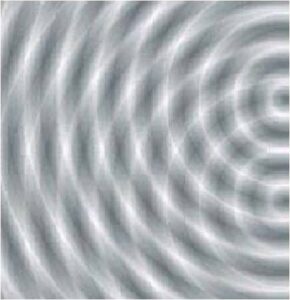
Fig. 3 Interference pattern |
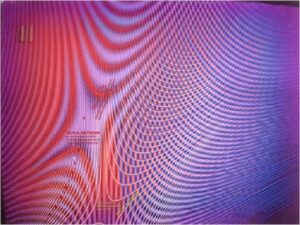
Fig. 4 Interference pattern |
Java demonstration of interference: http://www.falstad.com/ripple/ex-2source.html
Or from the same site: http://www.acoustics.salford.ac.uk/feschools/waves/super2.htm
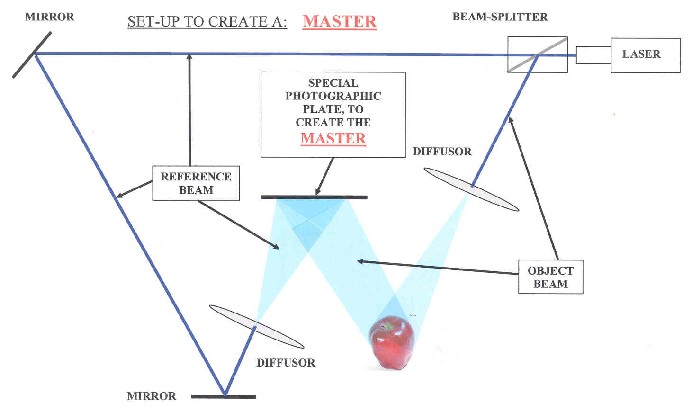
fig. 5 Object and Reference beam
Figure 5, shows on the right upper side a laser beam that is split in two beams of monochromatic light by a beam splitter. One beam called the “REFERENCE BEAM” is projected via mirrors and a diffuser onto a special photographic film (the recording medium). The second beam, called the “OBJECT BEAM” is projected via an expander lens onto the object and its reflection is also captured on the same photographic film.
The result is a photographically captured INTERFERENCE PATTERN that will look like the Figures 3 and fig. 4. An interference pattern captured in this way on the special photographic film is called a “MASTER”.
From this MASTER we can now create holograms in two different ways:
1) The reference beam is projected on the Master under the same angle that was used to create the Master but directed from the opposite side as from where it was during the recording. The result will be that the 3D object is now floating in the air in front of the Master. This recreated image has all the qualities and details of the original 3D object, but it is composed of LIGHT (see figure 6). It is called a real image.
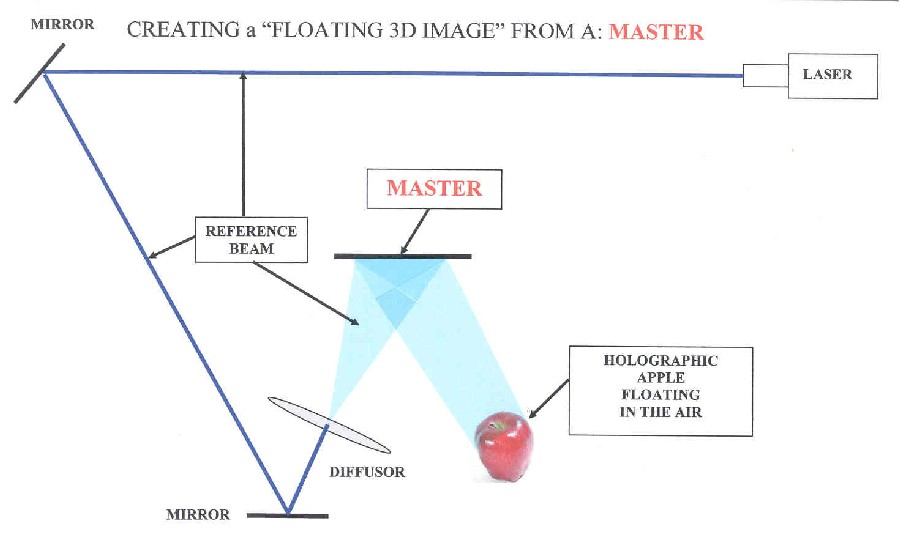
fig. 6 Apple floating in the air
2) The reference beam is again projected onto the Master under the same angle that was used to create the Master. Then the reflection is captured on another special holographic (photographic) film which has also a reference beam and the result will be a true copy of the hologram with the image straddling the holographic plate. (see figure 7).
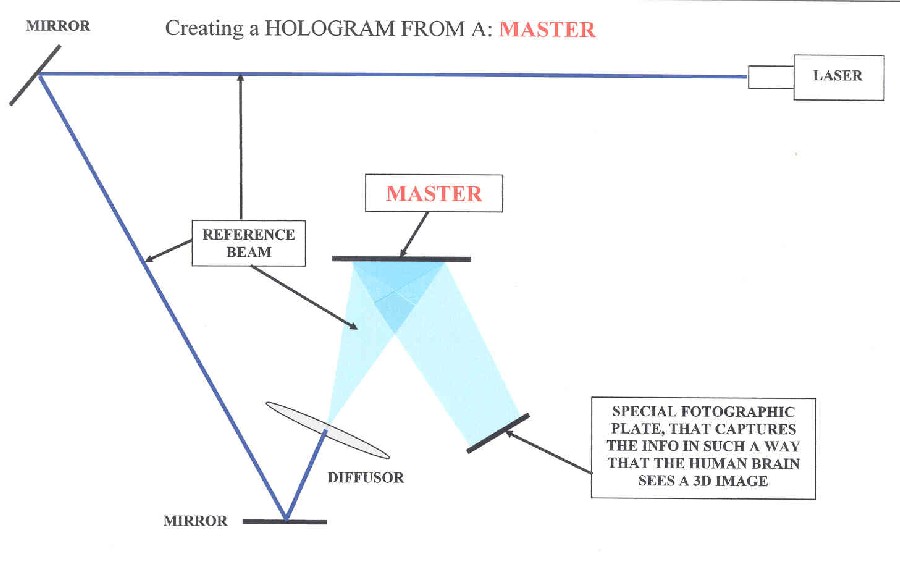
fig. 7 Producing copy of Master Hologram
With this knowledge we can now describe the process that was used in the DUTCH HOLOGRAPHIC LABORATORY (DHL) in Eindhoven in the Netherlands (Director WALTER SPIERINGS, www.holoprint.com) for the reconstruction of the 3D-image of the Shroud data with holography. Like we have told before, using digitized copies of the ENRIE photographs of 1931, the 3D information was extracted by means of grayscale mapping by BERNARDO GALMARINI in Buenos Aires, Argentina. This 3D information was then used to calculate a series of views. We made several views of this 3D model and then we generated an ANAGLYPH image which made viewing in 3D possible using red and cyan glasses. Seeing that the result was very good, this convinced us to continue and much more sophisticated methods were developed.
A virtual camera moves in a horizontal line past the 3D model (in the computer). Between the center view and the most left and right image all the other images were interpolated until a total of 625 virtual camera shots. These sequences were the basic information that the technicians in the DHL needed to produce the Master hologram. This was done in their Holographic Laboratory using the DFCH Holoprinter (developed by DHL). This Holoprinter employs a LcoS-chip (1920 x 1200 pixel resolution). See Figure 9.
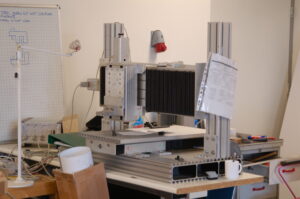
fig. 9 Holoprinter
In 2006 life-size holograms of both the front and the back images were produced of 200 x 100 cm by a Canadian Company, with each square mm built up of 1024 x 768 pixels. They chose to use the one step process, because it is an easier way of producing large size holograms (see Figure 13, 14, 15).
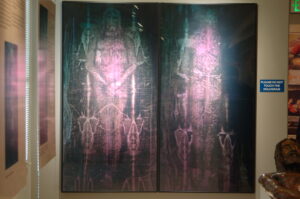
fig. 13 Life Size Hologram Exposition Sacramento |
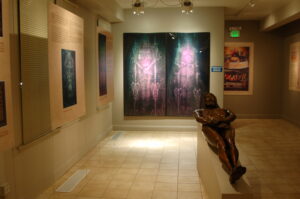
fig. 14 Life Size Hologram Exposition Sacramento |
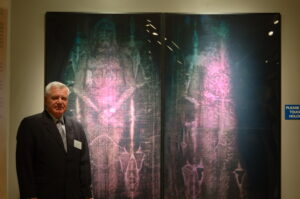
fig. 15 Dr. P. Soons in front of Life Size Holograms
Figure 8 shows how the technicians of the Holographic Laboratory created the Master with a computer-generated object beam, that contains all the before mentioned 3D information, (the 625 virtual camera shots). The result was then a perfect and very detailed Master Hologram.
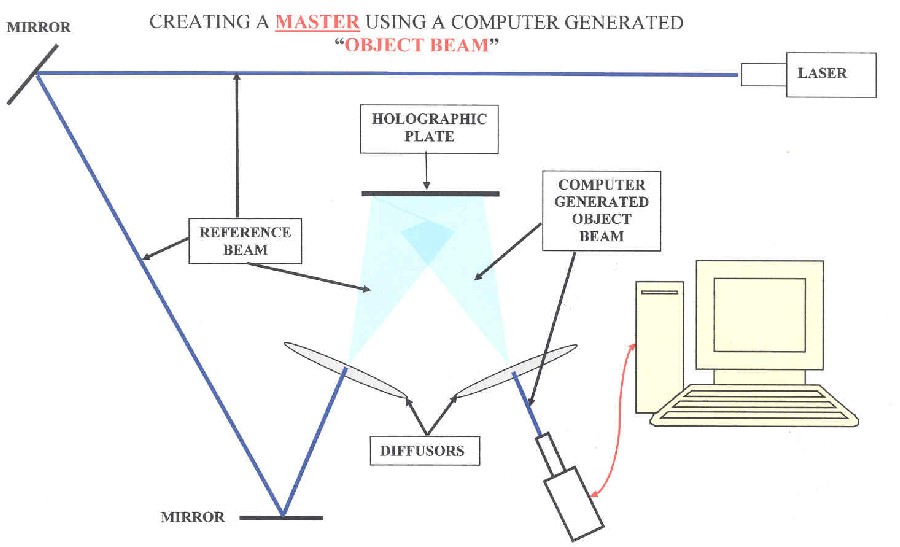
fig. 8 Computer generated Master Hologram
Information about the DUTCH HOLOGRAPHIC LABORATORY you can find in the following websites and also some sites that refer to articles about Holography written by WALTER SPIERINGS, the Director of DHL (founded in 1983), in Eindhoven, the Netherlands. See figures 10, 11 and 12.
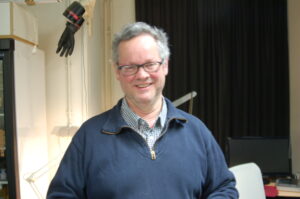
fig. 10 Walter Spierings Director DHL |
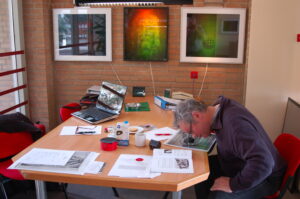
fig. 12 Spierings with Face Hologram on wall |
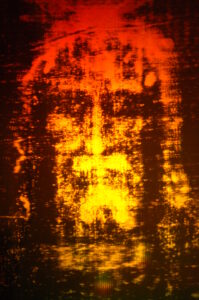
fig. 11 First Face Hologram
http://www.holoprint.com
http://www.holoprint.com/articles/leonardo/leonardo.html
http://www.holography.co.uk/Conference/Spierings/Walter.pdf
http://www.nvpt.nl/files/97-3-005.pdf
http://www.cgw.com/Publications/CGW/2008/Volume-31-Issue-7-July-2008-/Dimensional-Art.aspx
Other links that are useful:
http://science.howstuffworks.com/hologram.htm
http://holoworld.com
http://en.wikipedia.org/wiki/Holography
To get an idea of the HOLOPRINTER that was used to create the Master, Walter Spierings and Dr. Petrus Soons wrote an article with technical information in 2007, explaining the mathematics behind the process under the title:
“ 3D IMAGE RECONSTRUCTION OF SHROUD OF TURIN DATA WITH HOLOGRAPHY”
“THE HOLOPRINTER”
You will find this under No: 5.2
This article was written for the Turin Shroud Authorities, after they placed life-size Holograms of the front and the back image of the Shroud of Turin in the Museo della Sindone in Turin (see Figure 16) and was personally handed over to Don Giuseppe Ghiberti, Bruno Barberis and Nello Ballosino in the spring of 2007.
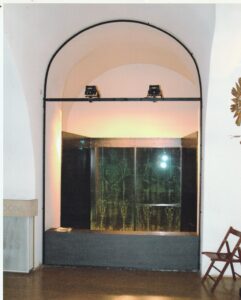
fig. 16 Set of Holograms Museo della Sindone Turin
Click to see article DHL WALTER SPIERINGS CURR
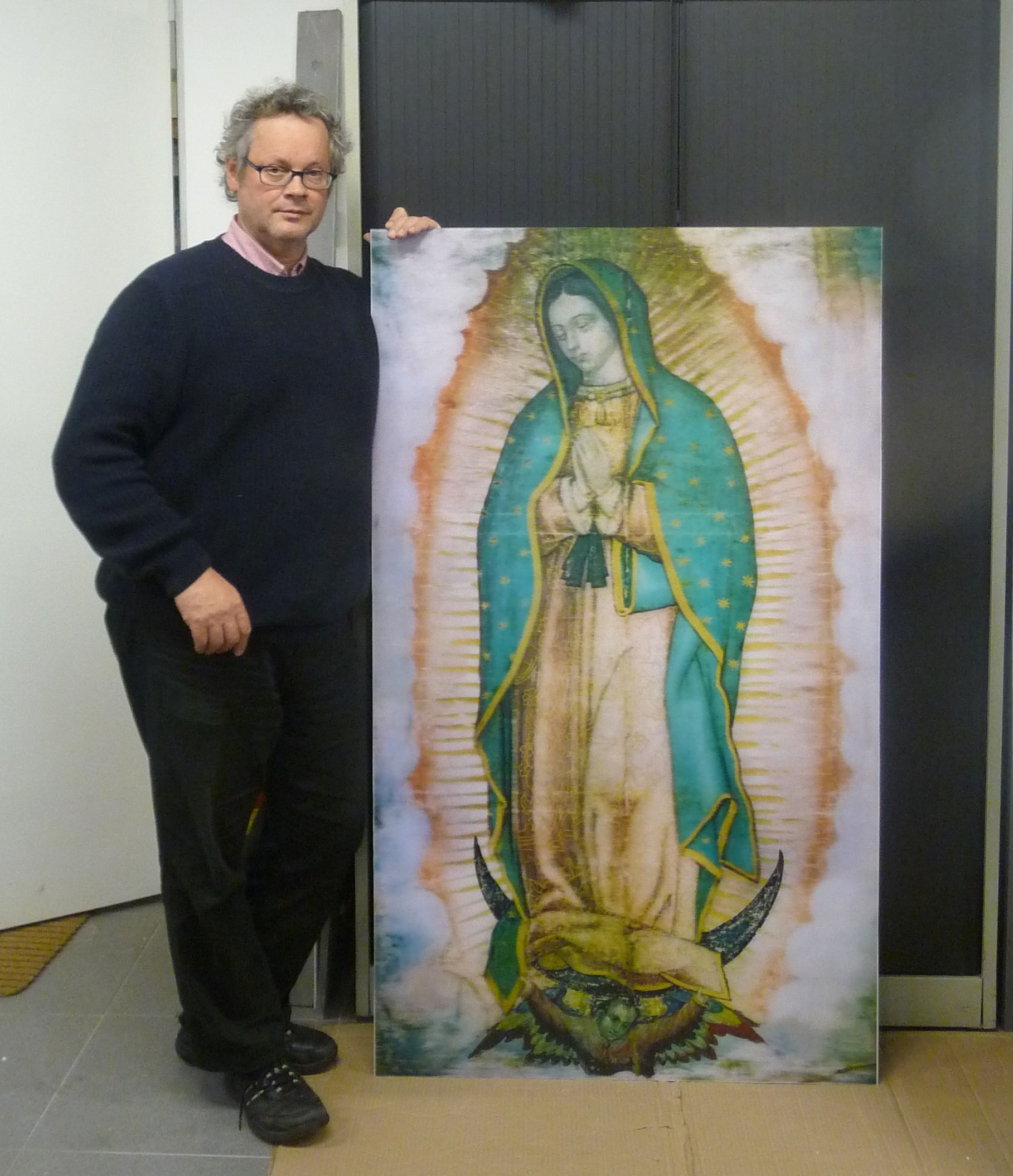
WALTER SPIERINGS with lenticular Virgen de Guadalupe
